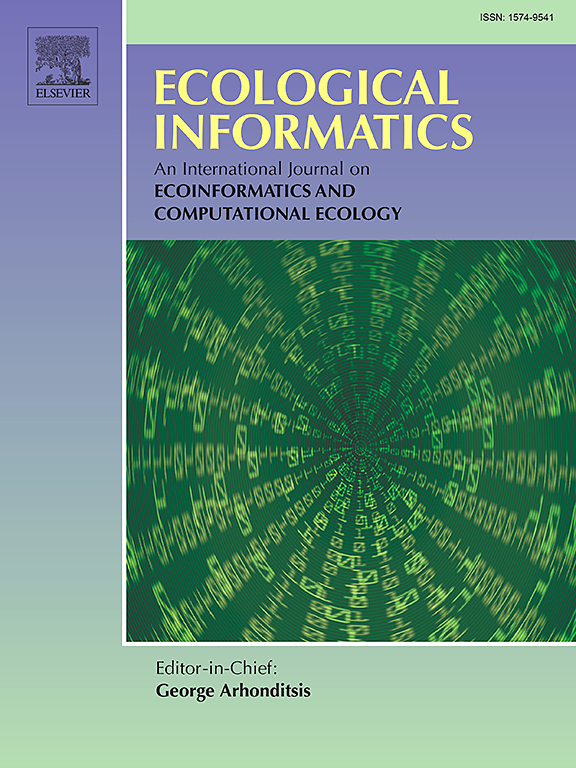Assessment of land surface vulnerability using time-series geospatial datasets
IF 5.8
2区 环境科学与生态学
Q1 ECOLOGY
引用次数: 0
Abstract
Assessing land surface vulnerability is important for understanding ecosystem responses to environmental changes. However, quantitative studies are still lacking, particularly in capturing temporal dynamics. This study proposes a framework for quantitatively assessing land surface vulnerability by integrating time-series geospatial datasets from the “water-soil-climate-plant” system, which reflects the dynamics of surface water, soil erosion, drought, and vegetation. Based on dynamic data from these four subsystems during 1990−2022, the spatial heterogeneity of land surface vulnerability and its relationship with both natural and anthropogenic factors were analyzed in the Hohhot-Baotou-Ordos-Yulin urban agglomeration. The results indicate that a significant spatial overlap between areas of high land surface vulnerability and ecological management zones. Specifically, 6.1 % of severely vulnerable regions are concentrated in the Maowusu sandy land, the Kubuqi desert, and the Loess hilly-gully region. Severe vulnerability is also evident in the central part of the urban agglomeration, largely influenced by the compound effects of multiple subsystems. Among these subsystems, the proportion of regions with high and severe vulnerability is highest in drought (33.4 %), followed by soil (16.7 %), vegetation (9.9 %), and surface water (9.3 %). Human activities have facilitated ecosystem recovery in the Yinshan Daqing Mountains and parts of the Kubuqi desert, whereas restoration efforts in the Maowusu sandy land remains limited. In the Loess hilly-gully region, vulnerability intensifies with increasing human activity but is relatively less affected by aridity intensity. By integrating annual fluctuations from key land surface subsystems, this study offers a dynamic vulnerability assessment framework, providing valuable insights for enhancing land surface system resilience in response to ongoing climatic and anthropogenic challenges.
利用时序地理空间数据集评估地表脆弱性
评估地表脆弱性对于了解生态系统对环境变化的反应非常重要。然而,定量研究仍然缺乏,特别是在捕捉时间动态方面。本研究通过整合反映地表水、土壤侵蚀、干旱和植被动态的“水-土壤-气候-植物”系统时序地理空间数据集,提出了一个定量评估地表脆弱性的框架。基于这4个子系统1990—2022年的动态数据,分析了呼和浩特—包头—鄂尔多斯—榆林城市群地表脆弱性的空间异质性及其与自然和人为因素的关系。结果表明,高地表脆弱性区与生态管理区在空间上存在明显的重叠。其中,6.1%的严重脆弱区集中在毛乌素沙地、库布其沙漠和黄土丘陵沟壑区。城市群中心区域脆弱性也较为严重,主要受多个子系统的复合效应影响。其中,干旱高重度脆弱性区占比最高(33.4%),其次是土壤(16.7%)、植被(9.9%)和地表水(9.3%)。人类活动促进了阴山、大庆山脉和库布其沙漠部分地区的生态系统恢复,而毛乌素沙地的恢复工作仍然有限。在黄土丘陵沟壑区,脆弱性随人类活动的增加而加剧,但受干旱强度的影响相对较小。通过整合关键陆地表面子系统的年度波动,本研究提供了一个动态脆弱性评估框架,为增强陆地表面系统应对持续气候和人为挑战的恢复力提供了有价值的见解。
本文章由计算机程序翻译,如有差异,请以英文原文为准。
求助全文
约1分钟内获得全文
求助全文
来源期刊

Ecological Informatics
环境科学-生态学
CiteScore
8.30
自引率
11.80%
发文量
346
审稿时长
46 days
期刊介绍:
The journal Ecological Informatics is devoted to the publication of high quality, peer-reviewed articles on all aspects of computational ecology, data science and biogeography. The scope of the journal takes into account the data-intensive nature of ecology, the growing capacity of information technology to access, harness and leverage complex data as well as the critical need for informing sustainable management in view of global environmental and climate change.
The nature of the journal is interdisciplinary at the crossover between ecology and informatics. It focuses on novel concepts and techniques for image- and genome-based monitoring and interpretation, sensor- and multimedia-based data acquisition, internet-based data archiving and sharing, data assimilation, modelling and prediction of ecological data.
 求助内容:
求助内容: 应助结果提醒方式:
应助结果提醒方式:


